Collaboration with Nadiya Petrovska
Concrete, glass, plastic, acrylic, liquid.
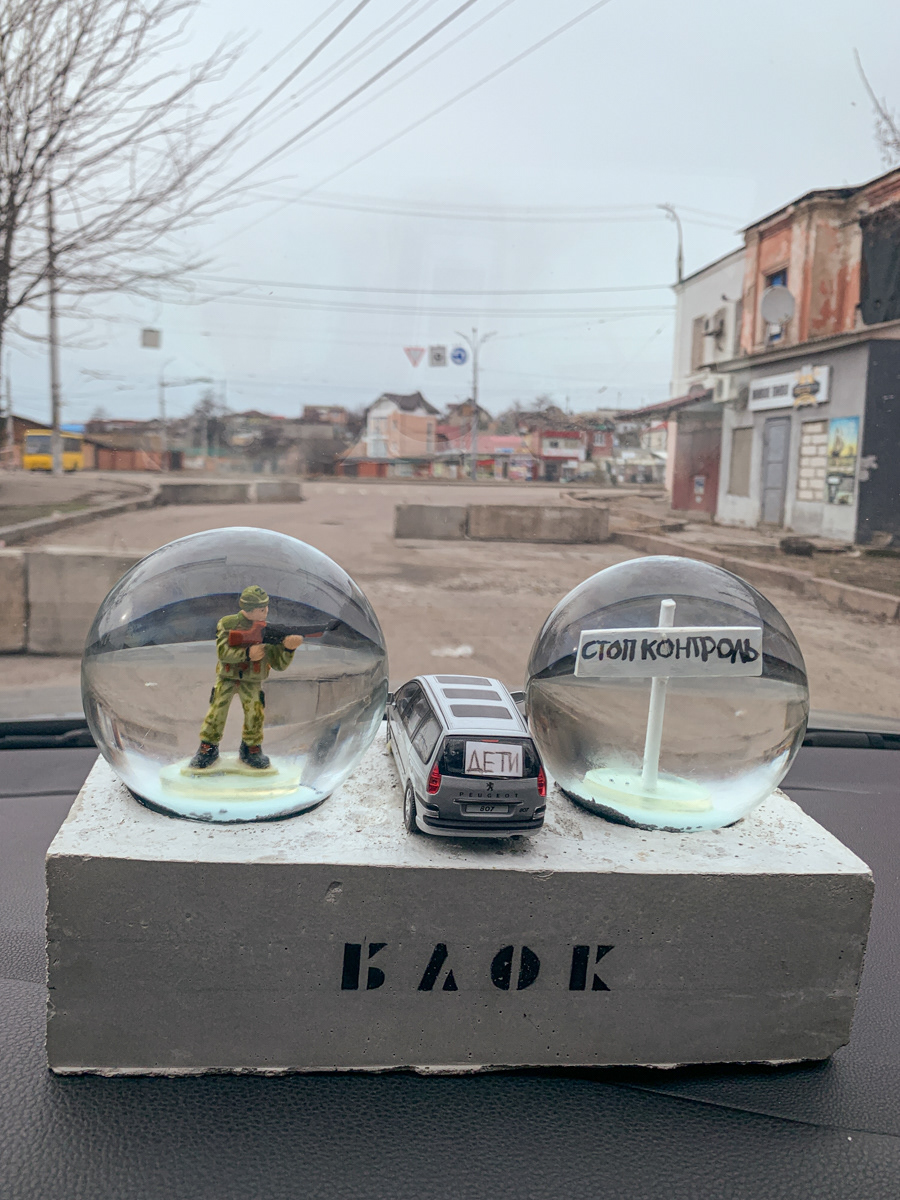
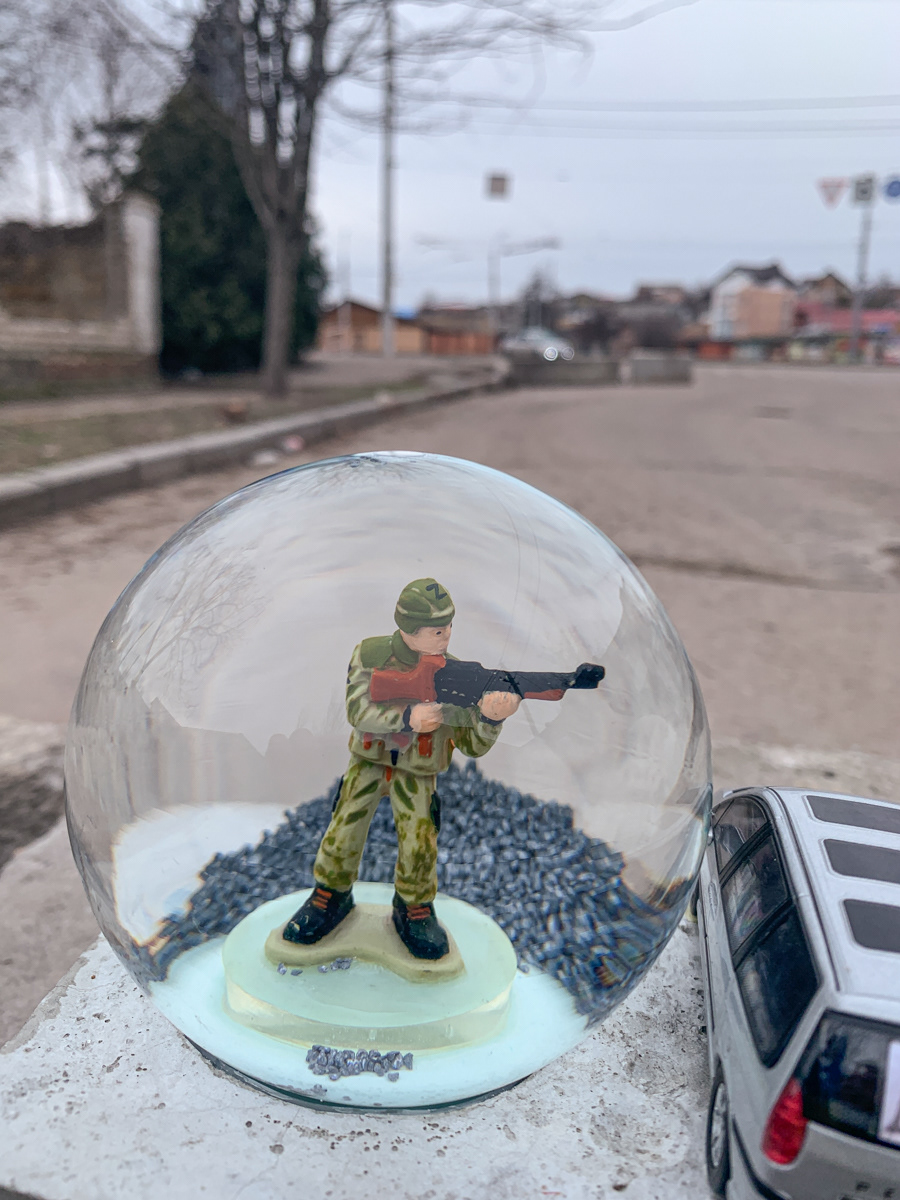
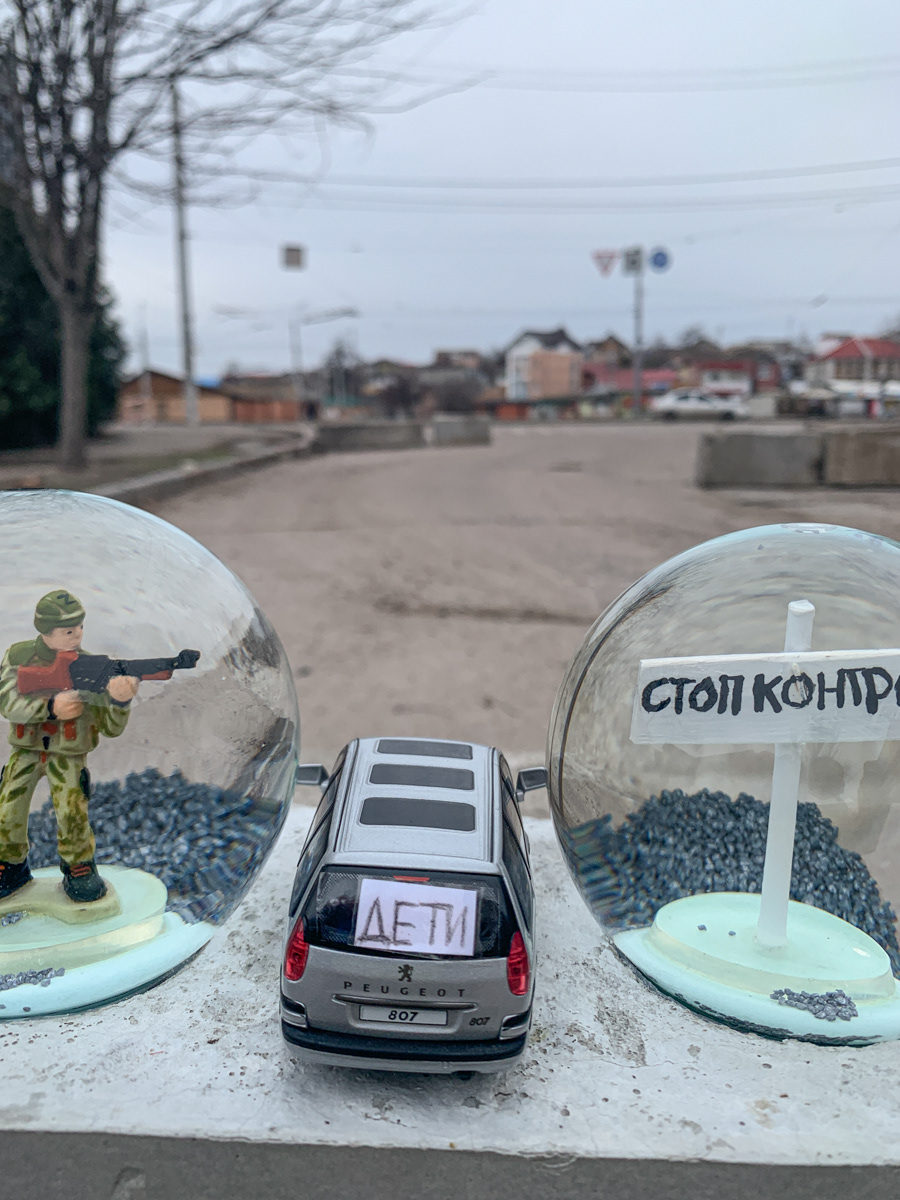
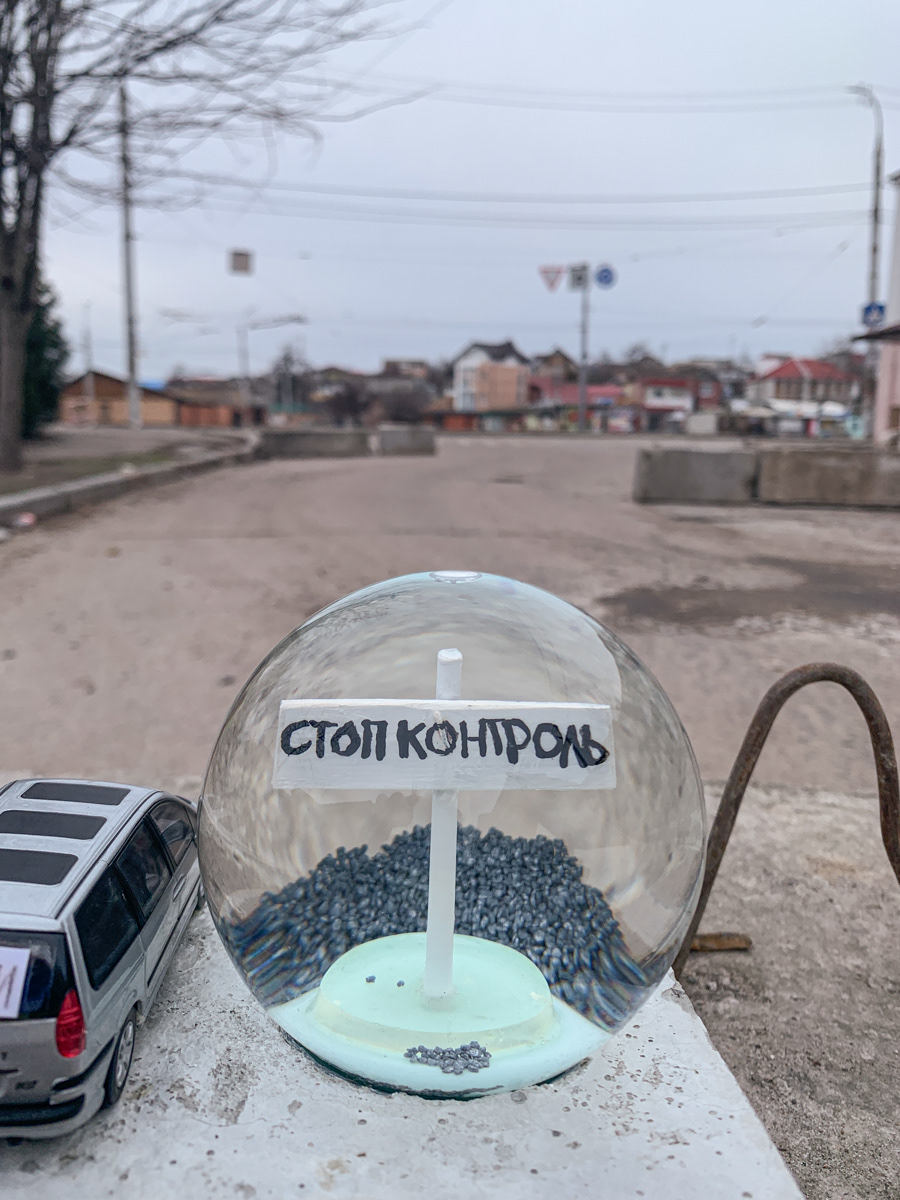
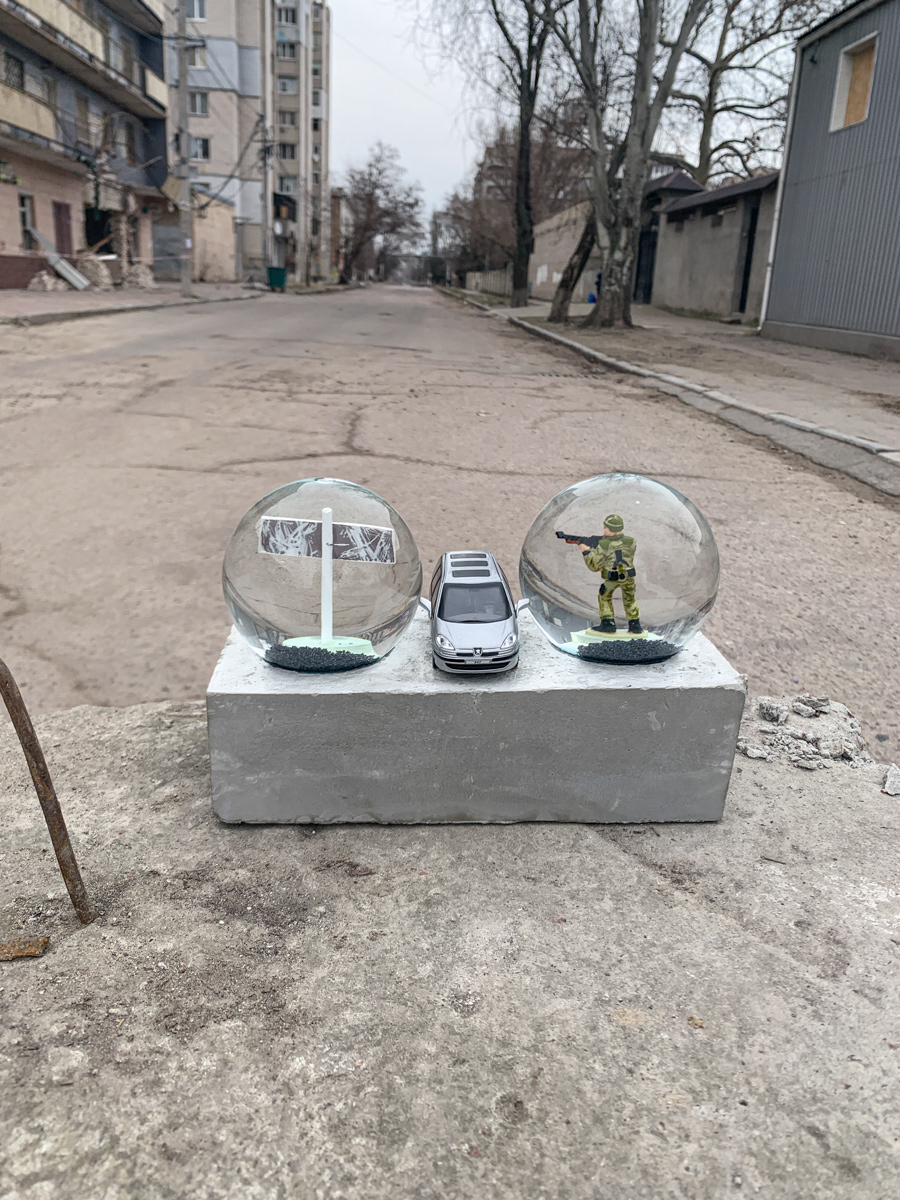
As you probably already guessed, this story is about Russian roadblocks. One of these was located behind the bridge that connected the Island district, where Nadia lived during the occupation and before it, with the city of Kherson. For her and all other residents of that area, there was no way to avoid this “unpleasant flying object". It was the only way into the city. The Russian occupiers—these aliens with their organic bio-Buryats—quite often stopped and searched not only individual cars but also passenger buses. Men were sometimes forced to undress, and even a child’s yellow-and-blue shoes could become a reason for suspicion. On this stretch of road, on this asteroid, two parallel realities, two different worlds, met.
My first personal experience with these roadblocks came that summer when I needed to leave the city's orbit. The first few times I was terrified. I didn't know if the Russians had learned about me yet. My artwork with a Z-shaped stitched-up face had gone viral, and I had already given a dozen interviews to the British BBC and a number of Russian opposition media. My phone, on closer inspection, would have betrayed me in a minute, no matter how well I cleaned it of all compromising traces. But everything worked out, and over the summer, I traveled quite often outside the Kherson "planet."
In the direction of Beryslav, the first asteroid was a roadblock in the Inzhenerne area. It was manned by Russian cops. Whether for intimidation or out of negligence, a destroyed, burned-out car sat in the middle of the road. Behind it, near Molodizhne, was another block, manned by bums from the LPR/DPR. They called me "compatriot" and begged for cigarettes. The most difficult task here was hiding disgust.
My first real space adventure came when one of the Russian cops, after checking my "space passport" and the trunk of my "stargolf," opened the back door, put down his blaster, and got in, telling my wife, who was at the wheel: "Drive!" Of course, I had time to think that I might have found fans of my art, and we were about to have a long talk about it somewhere in a cool basement, hidden from the summer heat. Fortunately, my "Artist Talk" at the local art torture gallery didn't get confirmed. He and his blaster simply got out at the end of the roadblock.
The final argument that turned me into a retired space traveler was a conflict with another cop on the same asteroid. My wife and I managed to avoid a full search of ourselves and the car, but we didn't dare to try our luck again. We became like many other Kherson residents who didn't flee, living in fear of turning into tobacco tar on a cigarette filter at one of those space blocks of intersection with a parallel universe, where at any moment you could become the character in their virtual reality—the space Nazi they were hunting.
In November 2022, immediately after the liberation of Kherson, we were driving along the roads of free Ukraine toward Mykolaiv and saw the first roadblock. This one was manned by Ukrainian military personnel, our defenders and liberators. We should have felt safe, but the same fear that we experienced during the occupation rose to the surface. I understand that for the part of the nervous system responsible for survival, details and circumstances do not matter. A concrete block, a car, camouflage, a rifle... it's just a set of non accidental triggers. What are we actually guided by? The road and the immediate danger will disappear, but the block remains. I would be happy to continue: "for life," but I'm not sure. Whose fear arose at the beginning of the invasion? Aren't we just going around and around from generation to generation?
Series concept
The gift that no one would want to receive.
No one in their right mind would ever want this gift. Yet, fate and our nervous systems grant it to us, leaving us with no other choice. War is a profound trauma. While the conflict will eventually end, the triggers—certain objects, sounds, and places—will repeatedly pull us back into the raw feelings and states we once experienced. These memories settle at the bottom of our psyche like a heavy block of concrete, lying dormant as long as they are connected to intense negative emotions. We cannot move forward until we have reconsidered these events and understood how they have reshaped our personalities and values for the better. Only then can these memories be transformed into the foundational blocks of the person we are yet to become. Triggers cannot be escaped; they must be confronted and discharged so they are not inherited by our children.

